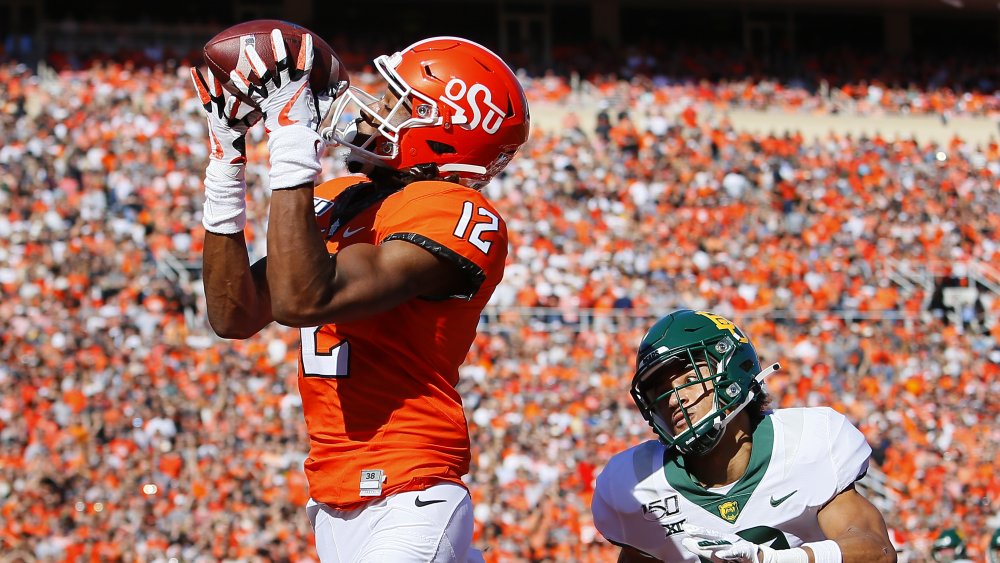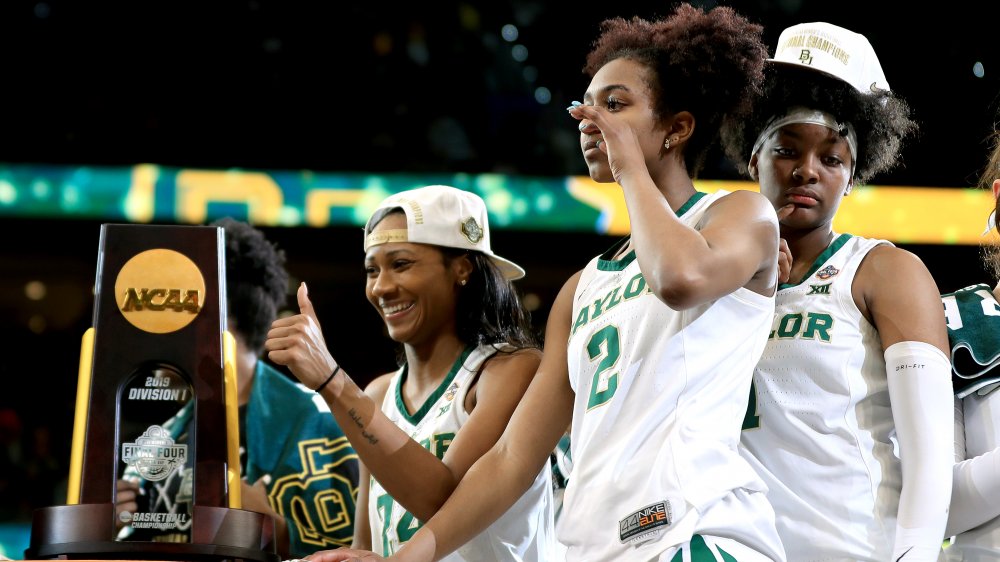Here's How Much College Athletes Will Get Paid Now
In a move that most would consider long overdue, the NCAA's governing board voted unanimously that college athletes should be allowed to receive compensation for their efforts. The vote, which was held in October, functions similarly to how federal and state legislation works — now that the "federal" governing board of the NCAA has voted, it's up to the three divisions to decide on specific rules and details.
According to CNBC, the decision is "a major shift for the NCAA, a [multi-billion dollar] corporation which had historically been steadfast in prohibiting college athletes from being paid, in order to preserve its amateurism rules." This often sparked outrage among the public, who watched as institutions and corporations raked in obscene profits from athletes' likenesses, while the athletes risked permanent injury and future professional viability in the name of their team. To add insult to injury, many top-tier coaches receive seven-figure salaries, without assuming any of the physical risk, while players aren't even allowed to monetize their Youtube channels.
But before you start slipping Junior 'roids in every bowl of porridge, note that athletes are still years away from seeing any money. California, the first state to pass legislation in favor of student athlete compensation with its "Fair Pay to Play Act," has already seen backlash from the NCAA, which has stated it is "likely unconstitutional."
Even if it isn't, the law isn't set to take effect until 2023, and each NCAA division has until Jan. 2021 to create its own rule set.
Greenbacks for redshirts?
So for now, college athletes will still get a big fat goose egg, with a booby prize of being the big wolf on campus. However, when things get sorted, top athletes will probably be raking in big bucks.
In a Fansided report, David Berri, sports economist and professor of economics at Southern Utah University, estimated what the men's and women's college basketball players from the 2017-2018 season would have been if the NCAA paid similarly to the NBA. "Duke standout Zion Williamson would have made over $5 million dollars. Napheesa Collier, UConn women's team standout, would have profited slightly less than $1 million dollars."
Of course, this is a very complex issue — every sport, player and division will require different rules and payouts, and it will take a long time to get things right. Expect a distribution of payments that might look something more like how Youtube works — top performers will take in obscene amounts of money while most will see a fraction of that amount. But progress continues to be made, players will receive something, and that is certainly better than nothing.

